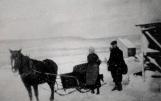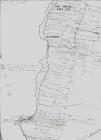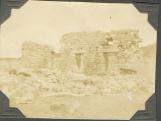1
A view of Lake Ainslie, taken at Ranald's River looking towards the North West end of the lake.13 November 2003
Lake Ainslie
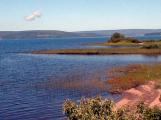
2
For many hundreds of years, the large fresh water lake in the middle of the southwestern part of Cape Breton Island knew the comings and goings of First Nations people. They fished on the lake itself and in the many streams which flow into the lake from the surrounding hills. They speared eels where the waters of the lake emptied out into a river which flowed north and then west to the ocean.3
The Lake freezes solid in winter making it an ideal way for the First Nations people to travel.1955
Lake Ainslie

4
Seen from above, the lake would be very evident as a hollow with low and moderately high hills surrounding, but it would be evident that people journeying from the large salt water lakes called Bras d'Or to the salt water Gulf of St. Lawrence could have used the lake as a convenient roadway - by canoe in the summer and by ice in the winter.6
The aboriginal people would have been well aware of the salmon coming up the river from the ocean and also the small bone-filled alewives (or gaspereaux), the good supply of hardwood to provide birch for canoes and for the making of shelters, and the maple trees that were useful for utensils and for their sap. But there was no major settlement of First Nations people along the shores of the lake - just the comings and goings as the seasons dictated.7
Small wharf at Trout River that was used to make the mouth of the river narrow for fishing.1955
East Lake Ainslie
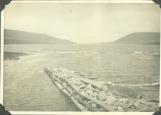
8
First named in the Mi'kmaw language and then as Lake Marguerite from the river of the same name (now shortened to Margaree) which flows out of the lake, the half to three quarters of a mile shelf of relatively flat land bordering the lake attracted incoming Gaelic-speaking Scots at the end of the second decade of the 1800's - starting in the 1816 period.10
As people settled around the western side of the Lake, they looked for land grants from the government of the Island of Cape Breton, at that time located in Sydney. The then Lt. Governor of the Island, Major General Ainslie as almost his last act in office determined that the lake would be called for him and assigned land grants to petitioners.12
Among the many and varied families who emigrated from Scotland from 1800 to 1820 was one by the name of Robertson. There is not much known of this family as neither they, nor their descendants remained at East Lake Ainslie very long.The Robertsons, along with the MacKinnon's (Allan Ban), were the two earliest settlers to come to East Lake Ainlsie. MacKinnon pioneered in the Kirkwood area, about two miles south of the Scotsville intersection. Robertson pioneered in the Trout Brook area, about six miles south of Scotsville.
It was Duncan Robertson who cleared the land on the two hundred (200) acres now bounded by the property of Peter MacMillan on the north, crown land on the east, Johnson property on the south and the waters of Lake Ainlsie on the west, extending from high-water mark at the lake shore to the Crown land at the rear, a distance of one and one quarter (1 1/4) miles.
About forty (40) acres were cleared while they lived on the property. Much work was done for it was necessary for the pioneer to cut the heavy timber, burn and uproot the stumps, clear away the rocks and put the soil in a workable condition.
